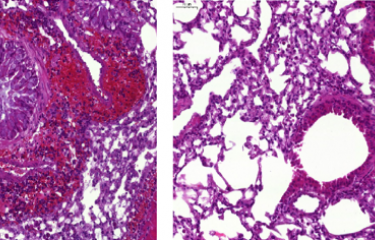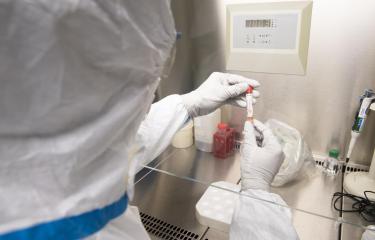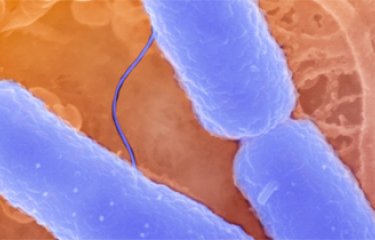Streptococcus B, one of the primary sources of infection in newborns, can cause pneumonia, septicemia, and meningitis. Portuguese researchers and a team from the Institut Pasteur associated with the French National Centre for Scientific Research (CNRS) have identified a bacterial protein that modifies the host's immune system to facilitate bacterial colonization. The researchers, who have published this study in the 'Journal of Immunology', believe that the protein they identified is a potential candidate for development as a vaccine against streptococcus B.
Press release
Paris, febuary 1st, 2007
Streptococcus B (Streptococcus agalactiae) infections are a public health problem. Each year, there are 800 cases of invasive infections in newborns in France, the majority of which are due to transmission from mother to infant. Mortality related to these infections remains high (50 to 100 deaths each year) and even with antibiotic therapy, 25 to 50% of the infants who survive have neurological sequelae.
A new route for the development of a vaccine against streptococcus B was recently discovered as the result of a study by the laboratory of Paula Ferreira at the Abel Salazar Institute for Biomedical Sciences in Porto, which was carried out in collaboration with Patrick Trieu-Cuot, head of the Biology of Gram-Positive Pathogens unit (associated with the CNRS) at the Institut Pasteur.
Some of the proteins produced by pathogenic microorganisms are capable of facilitating microbial colonization by interfering with the host’s immune system. The researchers showed that a protein named GAPDH, one of the proteins secreted by streptococcus B, stimulates the expression of a cytokine named IL-10 (interleukin 10), one of the immune system’s "messengers". This increase in IL-10 synthesis results in a reduction of the immune defences, thereby facilitating the invasive bacterial infection. The researchers also showed that mice that are deficient in IL-10 are much more resistant to streptococcus B infections.
The researchers concluded that GAPDH can be used in immunoprotective approaches against streptococcus B. Preliminary immunization tests on mice demonstrated the protective effect of GAPDH against streptococcus B infection, thereby confirming that this protein is a good vaccine candidate.
"The ideal vaccine strategy would consist in inducing a mucosal immunity that allows the elimination of the vaginal carriage of streptococcus B, explained Patrick Trieu-Cuot. As a consequence of this vaccination, there will be no further need for prophylactic antibiotic treatment administered at the beginning of labour in pregnant women infected by these bacteria. " Note: systematic testing is currently carried out between the 34th and 37th week of amenorrhea.
Researchers are now working on developing this vaccine strategy.
Sources
"Streptococcus agalactiae GAPDH is a virulence-associated immunomodulatory protein". Journal of Immunology, February 1st 2007.
Pedro Madureira (1), Marina Baptista (1), Marta Vieira (1), Vanessa Magalhães (1), Ana Camelo (1), Liliana Oliveira (1), Adìlia Ribeiro (1,2), Delfina Tavares (1,2), Patrick Trieu-Cuot (3), Manuel Vilanova (1,2) and Paula Ferreira (1,2)
1. ICBAS, the Abel Salazar Institute for Biomedical Sciences, Porto, Portugal
2. IBMC, the Institute for Molecular and Cellular Biology, Porto, Portugal
3. Biology of Gram-Positive Pathogens Unit, CNRS URA 2172, Institut Pasteur, Paris, France
Contact persons
- Service de presse de l’Institut Pasteur : Nadine Peyrolo ou Corinne Jamma
Tél : 01 40 61 33 41 - courriel : cjamma@pasteur.fr
- Service de presse du CNRS : Cécile Pérol
Tél : 01 44 96 43 09 - courriel : cecile.perol@cnrs-dir.fr







